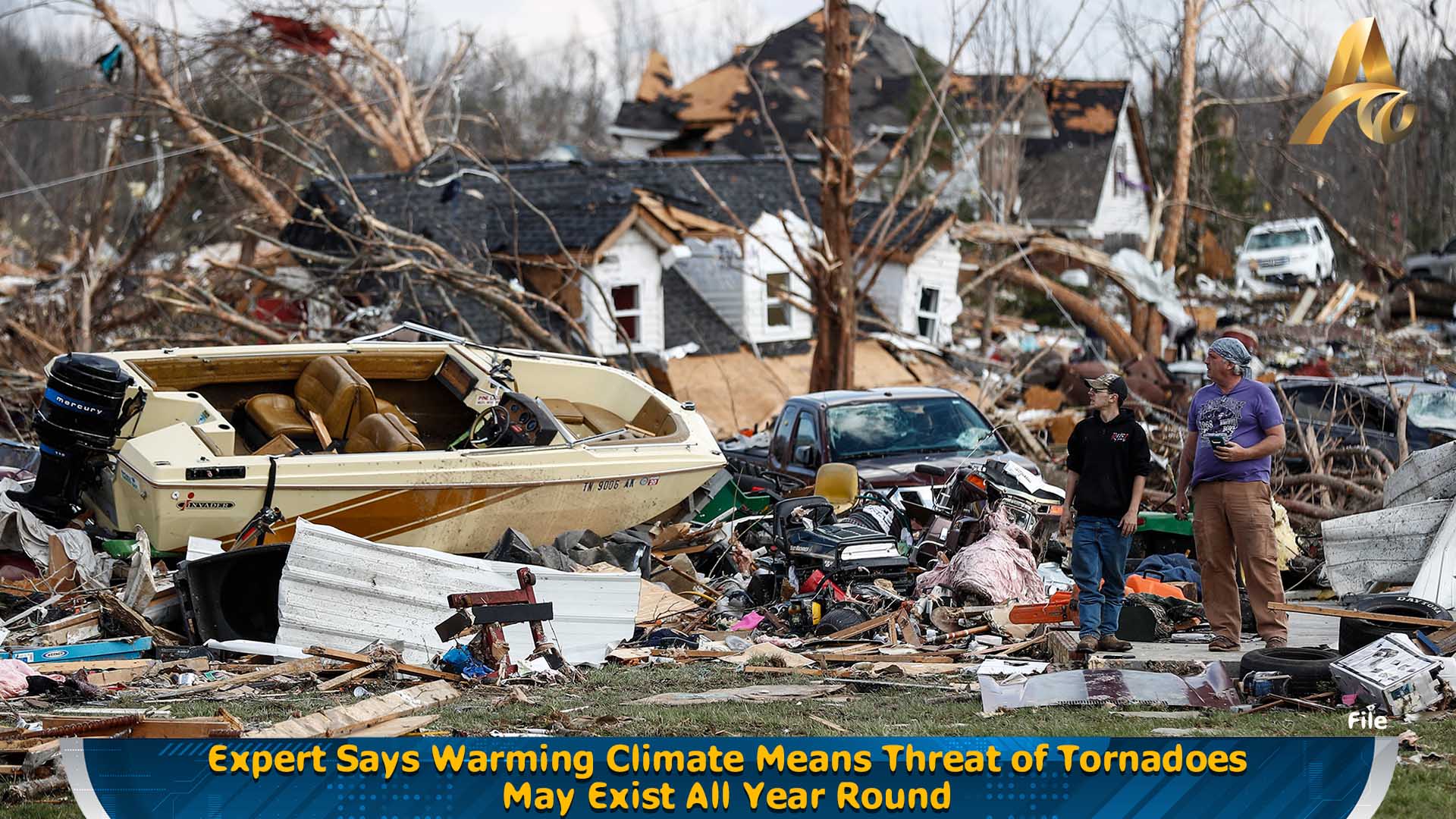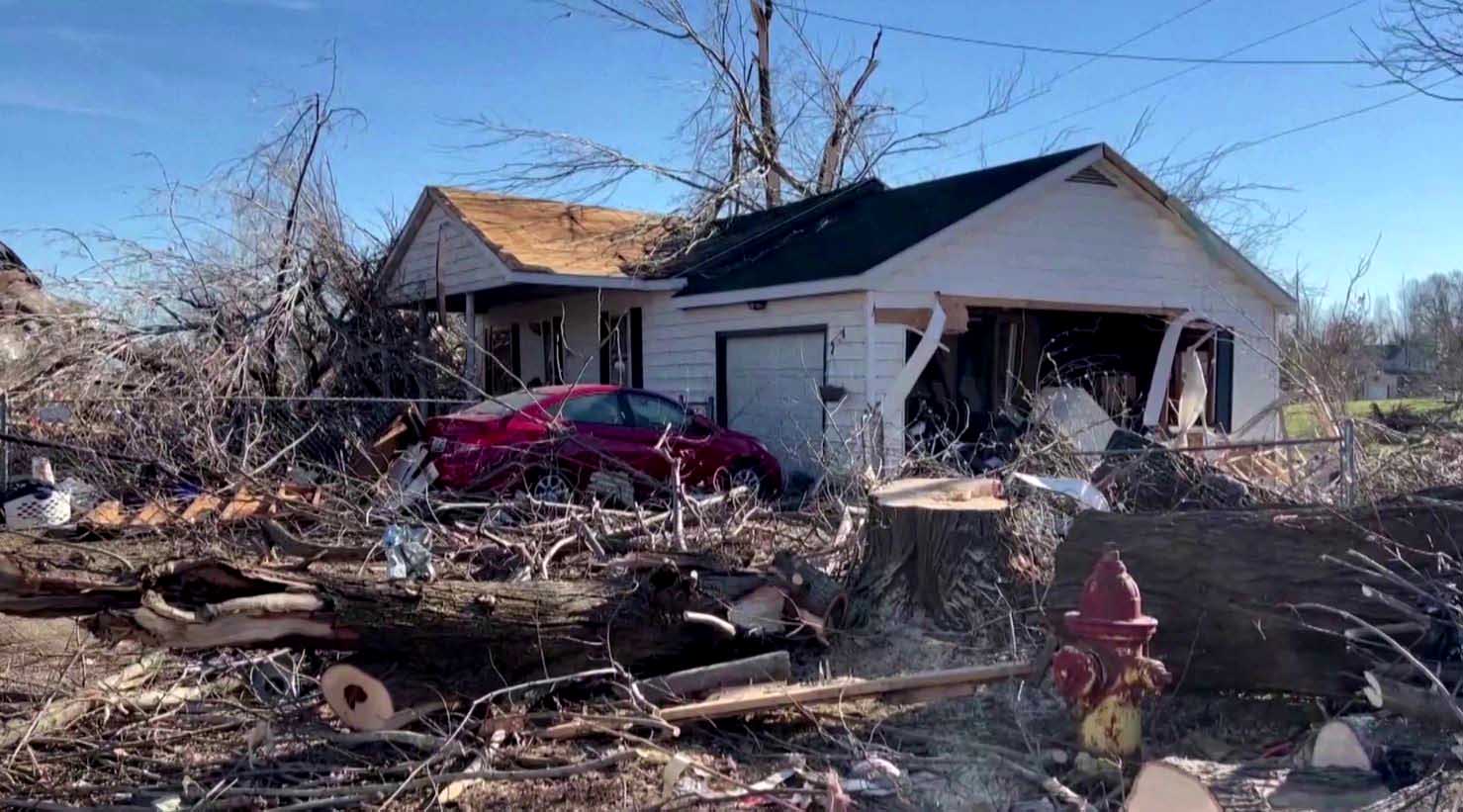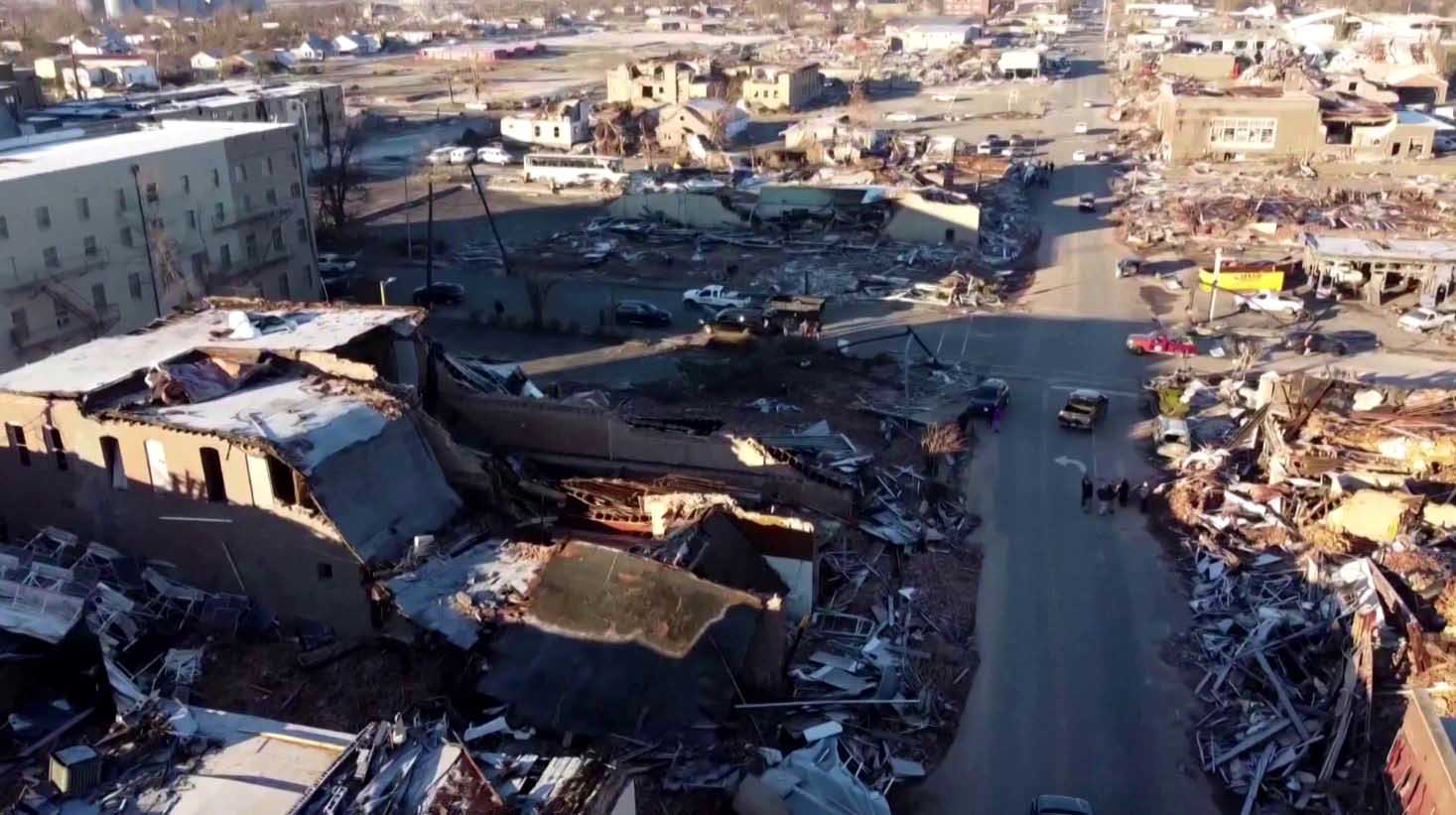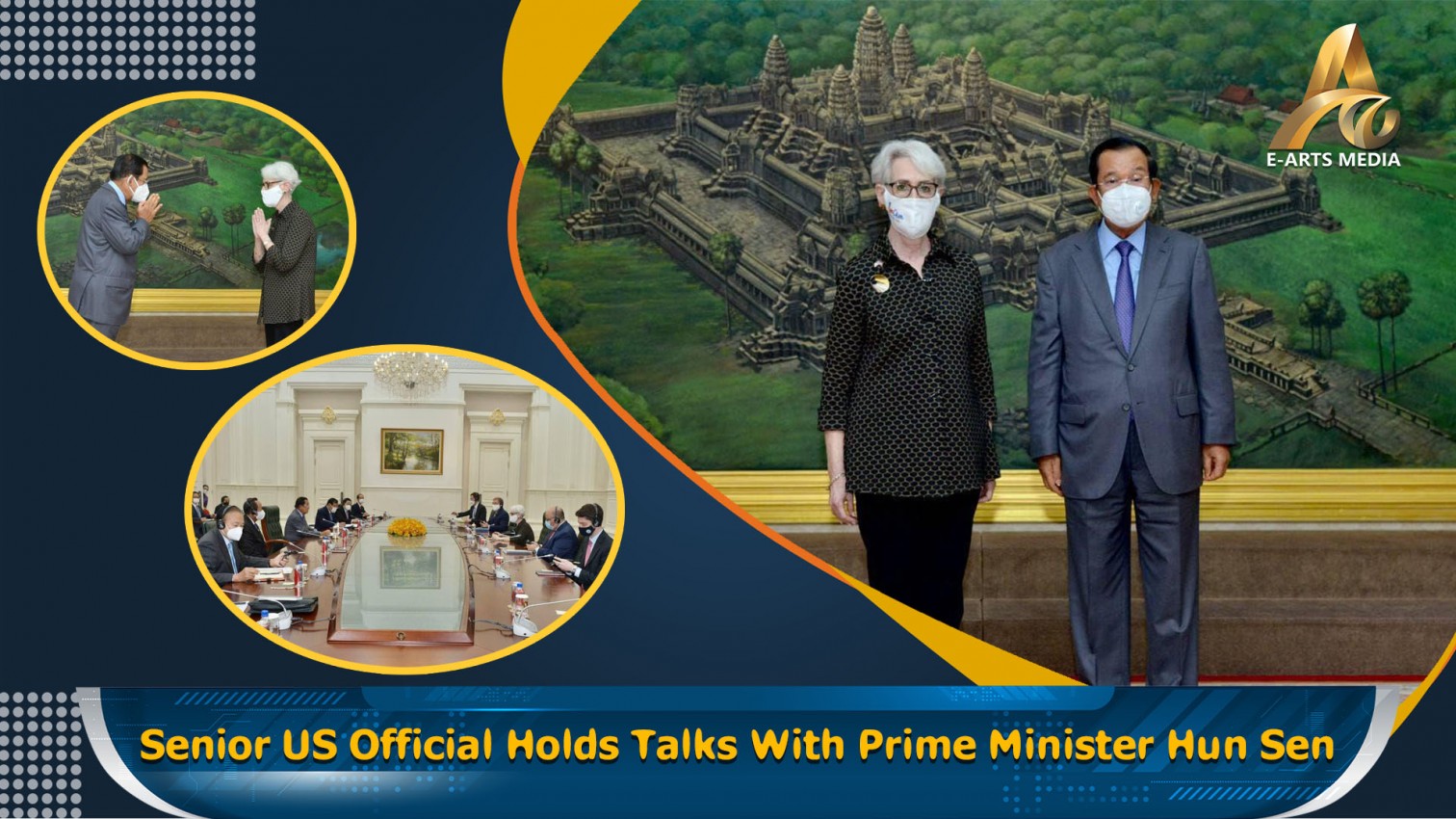INTERNATIONAL: Hurricane Scientist, Author, Yale Climate Connections Jeff Masters confirms there were over 30 tornadoes that touched down Friday night in Kentucky, and that was one of the largest tornado outbreaks we've ever seen in December. And one of those tornadoes appeared to have been on the ground for at least 100 miles, maybe over 200, which would make it one of the longest, if not the longest tracking tornado in history, leaving an unimaginable path of destruction.
The effects of climate change mean that extreme weather events have been on the rise, while warmer temperatures also increase the threat of destructive tornadoes occurring all year round, an expert has warned in the aftermath of a deadly series of tornadoes which inflicting widespread damage across multiple U.S. states.
Jeff Masters who has written extensively on extreme weather and climate issues, made the stark warning following one of the most destructive natural disasters in U.S. history, when a swarm of tornadoes tore through six states including Kentucky, Arkansas, Illinois, Mississippi, Missouri and Tennessee on 10 December, causing over 100 deaths and huge economic losses.
Masters has explained the greater difficulties faced by residents when a tornado strikes at night, giving them less chance of escape. "Winter tornadoes are a big problem because it's dark so long in winter that you've got the darkness issue to contend with. People don't react as quickly when it's dark out as they can actually see the storm coming and then like you said, they tend to be asleep so the death toll is much higher when you get a night-time tornado," he said and that’s what happened last Friday night.
According to Masters, there are steps that can be taken by local governments to improve building standards to withstand storms and tornadoes to a certain degree, although he admits there is little that can be done to defend against a twister in the EF-4 category, the second highest level of the Enhanced Fujita (EF) scale.
"You can improve building codes, and that will help. When you get a EF-4 tornado, a violent tornado like this one probably was, there's not a whole lot you can do. But certainly you can make buildings withstand 150-mile-an-hour winds in an EF-3 tornado, and it would probably be wise to do that over a large part of Tornado Alley," he said.
Masters also said there is a clear correlation between a warming global climate and the number of off-season storms, which means residents should brace themselves for tornadoes throughout the year.
"Tornado season is not just in the spring anymore. We've got a warmer climate, and that means you can get a tornado any time of year, and so you've got to be prepared anywhere you live in the midwest U.S., southeast U.S. You can get a tornado in December, January and February. We been seeing an increasing number of these off-season storms. So, tornado season is all-season-long now, all year long," said the expert.
























